Chart of the Week: 70% of marketers say that their main goal for using social media is to increase brand awareness, showing that social is about more than sales
Social media continues to be a powerful marketing tool for brands and yet almost half (47%) of marketers say that the biggest challenge they face is creating a social media strategy that supports their organization’s goals.
Sprout Social’s latest report reveals that marketers’ biggest goal for social media is to increase brand awareness, with 70% choosing this option. Second to this is sales/lead generation (59%), which is likely to reflect the larger goals of an organization and may not be suited to social media for every company.
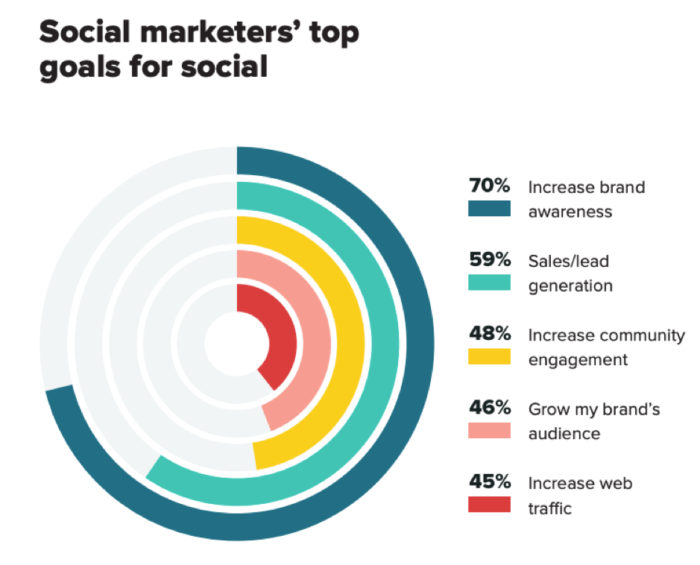
Other goals that marketers have for social media include increasing community engagement (48%), growing the brand’s audience (46%) and increasing web traffic (45%). These figures show that while social media is increasingly becoming a space for selling or for directing traffic, it is still predominantly all about increasing awareness.
The idea of increasing community engagement is interesting, especially when you consider that there are many ways of measuring engagement across social platforms. While some brands may use comments or shares as a sign of engagement, others will look to conversion, which may not accurately reflect the goals of their social media strategy.
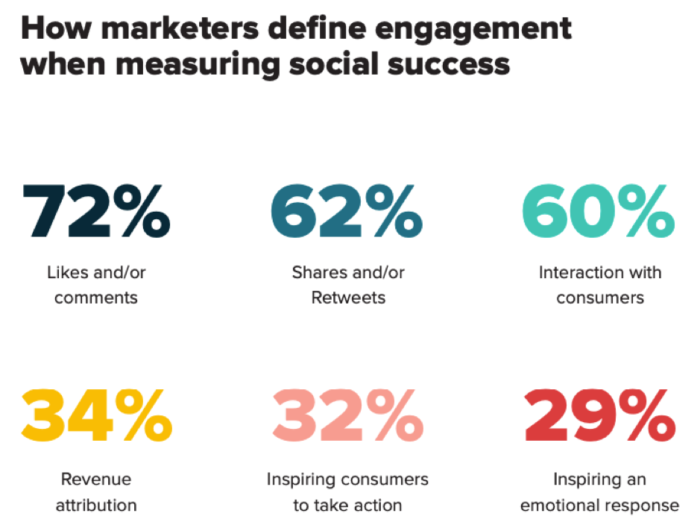
Overall, most marketers seem to have their definition of engagement lined up with their top goals when it comes to social media. Some 72% define likes and/or comments as engagement and a key part of measuring the success of their strategy.
Just over a third (34%) define engagement in terms of revenue attribution, which may not provide an accurate measure of success – especially if their industry is not suited to social selling.
The platforms marketers use
When it comes to the social platforms that marketers use, Facebook is the most popular. Some 89% of marketers use the platform as part of their social strategy. However, just 66% of consumers follow brands on this platform, so brand’s messaging may not be reaching a large portion of their target audience.
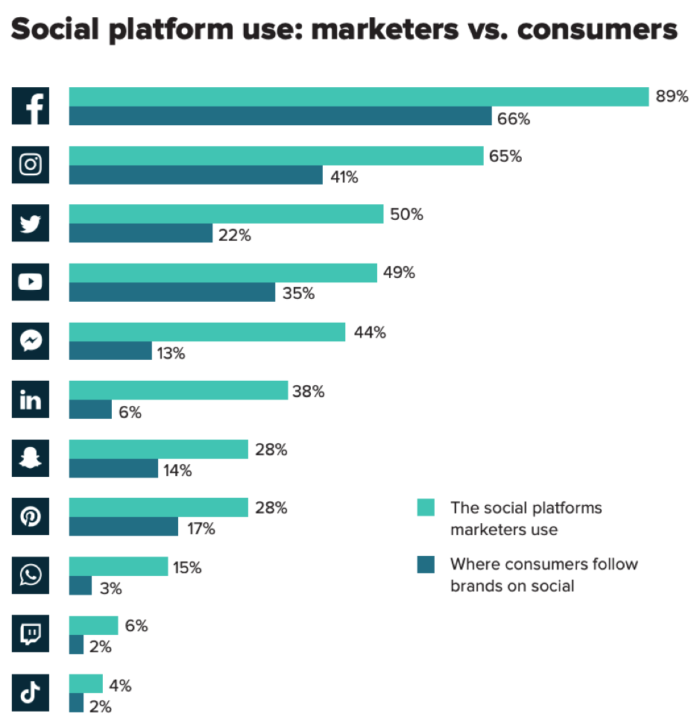
Following on from Facebook, the second most popular platforms for brands is Instagram, with 65% of marketers incorporating the image-sharing platform into their strategy. Once again, fewer consumers (41%) follow brands on Instagram, however, there are a lot more influencers on the platform, meaning brands have more options when it comes to increasing engagement.
The biggest difference between brands and consumers is seen on LinkedIn. While 38% of marketers use LinkedIn as part of their brand’s strategy, just 6% of consumers follow brands on the platform. This means that unless a strategy is incredibly targeted, it may fall short of achieving the type of engagement you want on LinkedIn.
Download our Individual Member Resource – Social media marketing strategy guide
Our social media strategy guide will help you create an integrated social media marketing strategy that shows you how to increase engagement to boost leads and sales using the social networks.
Access the Social media marketing strategy guide
In terms of platforms that are used the least by both consumers and marketers, WhatsApp is struggling to show its worth within strategies and consumers aren’t connecting with brands on this platform. While TikTok is growing in popularity, very few brands are using it and consumers aren’t yet making use of the platform to follow brands.
Investment priorities
While having a presence across several social media platforms is the best option, understanding where to put the bulk of your investment is vital. With the main goal for marketers when it comes to their social strategies being increasing brand awareness, it’s no wonder that over half (54%) prioritize which social platforms to invest in based on potential audience reach.
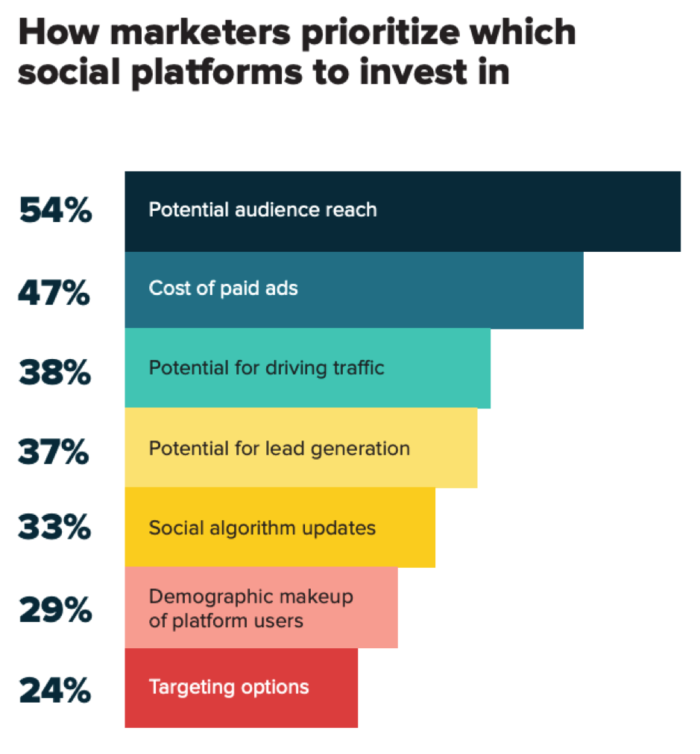
The cost of paid ads on a platform is also a big consideration for 47% of marketers, with ads that cost less but reach more people likely to be the biggest draw. Despite this and reach being big aspects of marketers’ decisions, only 24% say that they consider targeting options when prioritizing social media investment.
Greatest challenges
Although developing a social media strategy that supports overall business goals is the biggest challenge marketers face, it is far from the only one. According to the report, marketers are struggling to target and understand their audience, secure budget for social media and publishing content.
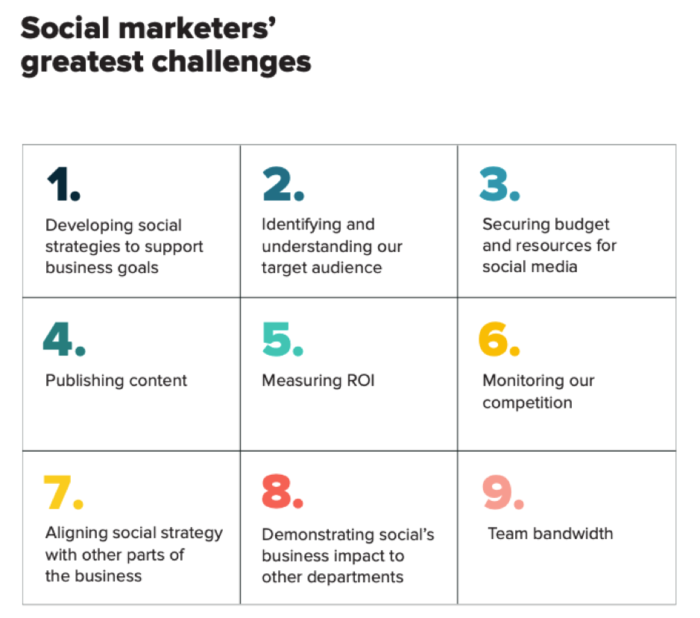
However, one challenge that will affect overall social media results is measuring ROI. Not understanding how to measure ROI means that no matter what your goals, you will not be able to show success. This can ultimately affect other aspects of a strategy, especially securing budget for future activity and aligning the social strategy with other parts of the business.
Understanding consumers’ motivations
While marketers develop strategies for social media that will benefit brand, it’s vital to consider consumers’ wants and habits too. After all, posting the wrong thing at the wrong time can mean you lose parts of an audience and so reduce the overall success of a strategy.
The Sprout Social report also includes information on why consumers take certain actions, which should always be a base part of targeting an audience.
According to the findings, 50% of consumers follow brands on social media to learn about new products or services, which is the biggest motivation. This is good news for those who are using social media to improve sales but it isn’t as easy as just making every post about products, especially when you consider the fact that 49% of consumers follow brands to be entertained.
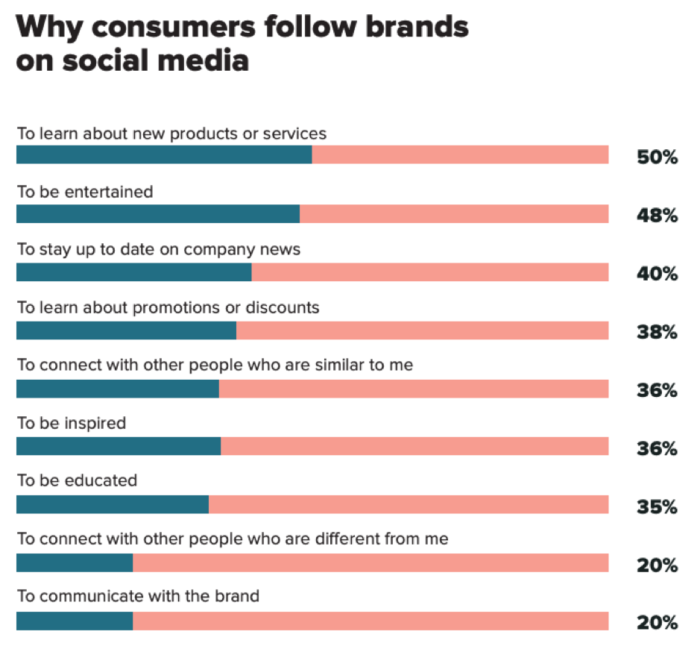
Over a third (36%) follow brands in order to be inspired, showing that aspirational content is still a big deal, while 35% look for educational content. Both of these reasons provide strong ideas for content and can help you produce a varied strategy.
In terms of reasons why consumers unfollow brands, poor customer service is the biggest reason, with 56% choosing it. Although only 20% of consumers follow a brand to communicate with it, customer service is still a vital part of a social media strategy. Failing to answer messages or respond to comments can result in unfollows and negative sentiment across platforms.
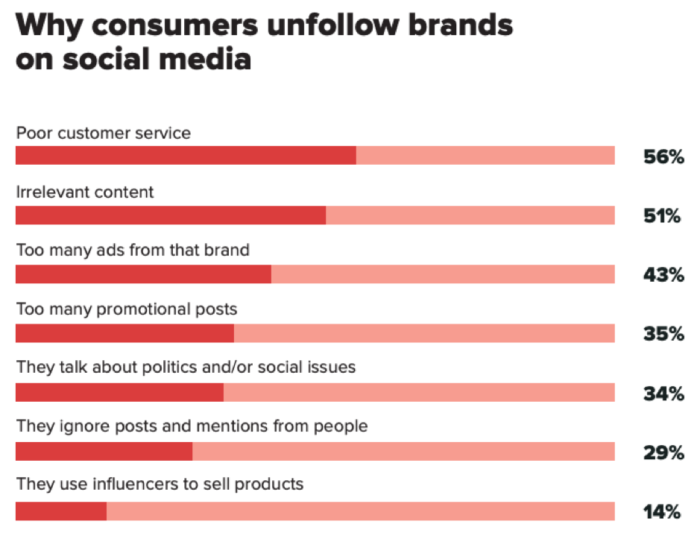
The second biggest reason for unfollowing a brand is irrelevant content, proving that understanding your target audience is a must.
Consumers are also switched off by brands that do too much promotion with too many ads (43%) and too many promotional posts (35%) both being cited as reason to unfollow. All of this shows that balancing your strategy to ensure content is relevant but not all product-focused is important to its success.
What encourages engagement?
Bearing all of this in mind, what types of posts are most likely to get the engagement that brands and social media marketers seek?
According to the research, posts that entertain are more likely to be liked or shared on a platform. This means that posts that aren’t necessarily about the product or service on offer but that shows the personality of a brand are more likely to see greater engagement.
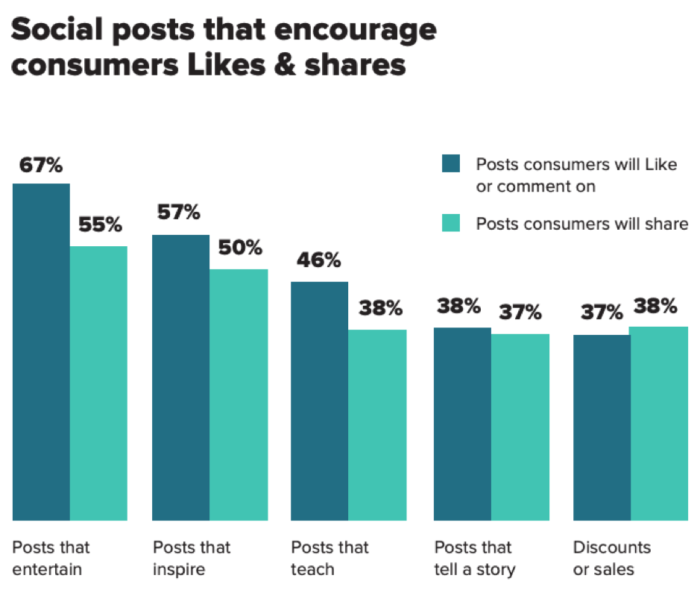
Other popular posts are those that inspire and those that teach. In fact, posts that share discounts or sales are least likely to be liked, even though 38% of consumers follow brands in order to be informed about discounts.
Final thoughts
While aligning the goals of a social media strategy with the goals of the overall business is important, it isn’t always going to work. Although a brand may want to boost sales, social media is not always going to do this straight away.
Social media is key for boosting brand awareness, but to do this, you need to have a good understanding of your audience. This allows you to create relevant content – which shouldn’t all be sales-focused – and deliver the right type of customer service.
Similarly, understanding what turns consumers off of brands can help you avoid social media mistakes that can reduce your following.
Overall though, what this report shows is that marketers need to get to grips with measuring and reporting on social media ROI. If platforms and results are not all about sales, you need to understand exactly what engagement contributes to your return on investment and how to tie this to your strategy goals.















